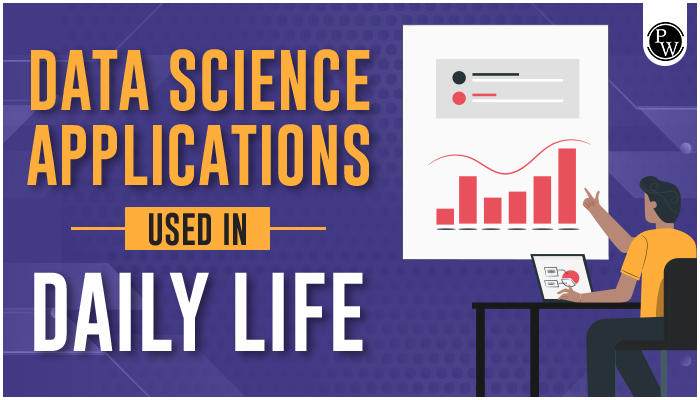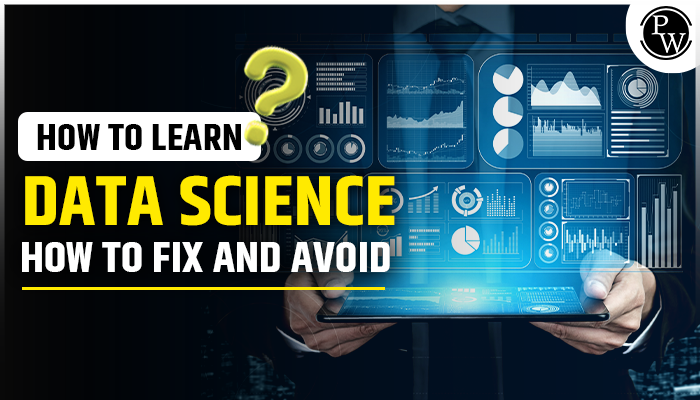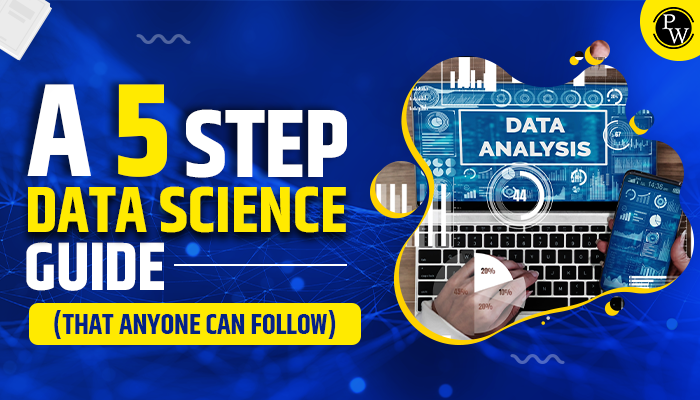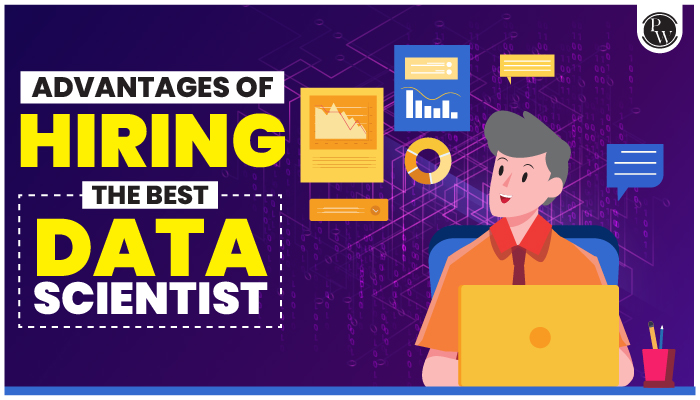Data has turned into the lifeblood of Job Roles in data science organizations across industries in today’s quickly changing digital economy. The enormous amount of data produced by users, systems, and linked devices is both difficult and a chance. Data science becomes more important in this area, enabling organizations to derive valuable insights and make data-driven choices. We’ll go into the realm of data science. In this article examine the importance and different Job Roles in data science in the modern economy and show how it has a revolutionary effect on enterprises.
In order to extract crucial information and insights from data, data scientists mix scientific methodologies, algorithms, and tools. Data purification, data integration, statistical modelling, machine learning, and predictive analytics are just a few of the many methodologies it involves. Data scientists can turn raw data into useful insights by utilizing these approaches, giving organizations the ability to decide wisely and acquire a competitive edge.
Numerous data science Job Roles have developed in the fast-paced field of data science to address various facets of data analysis, modelling, and implementation. The following are some of the most important job roles you can often find in the data science sector:
Recommended Course
- Decode DSA with C++
- Full Stack Data Science Pro Course
- Java For Cloud Course
- Full Stack Web Development Course
- Data Analytics Course
Top Job Role in Data Science
-
Data Analyst
In today’s data-driven society, specialists that specialize in data analysis are essential. They are in charge of collecting, analyzing, and interpreting data to aid organizational decision-making processes. This job role in data science requires expertise in converting unstructured data into more insightful data that can be used to promote success in enterprises.
A data analyst’s main responsibility is to gather and clean data from multiple sources to ensure its correctness and consistency. They use statistical and analytical methods to analyze massive datasets in order to find trends, patterns, and correlations. They display their findings in an understandable and useful way by undertaking exploratory data analysis and using data visualization tools.
Role:
Data collection: To ensure the accuracy and dependability of the data, data analysts gather information from a variety of sources. Data Preprocessing: They handle missing numbers, outliers, and inconsistent data by cleaning and preprocessing it Data analysis: To explore and analyze information and uncover patterns, trends, and correlations, data analysts use statistical techniques and analytical tools.
Data visualization: They produce dashboards, reports, and visualizations to communicate information in an understandable and insightful manner. Data analysts offer insights and suggestions based on data to enhance decision-making processes.
Responsibility:
Data Gathering and Cleaning: Data analysts collect data from various sources to ensure that it is accurate and consistent. To ensure data quality, they perform data cleaning procedures such as removing duplication, processing missing values, and standardizing data formats.
Data analysis: Data analysts study databases to find trends, correlations, and patterns. They do this by using statistical techniques and analytical tools. To get insights and convey them in a meaningful way, they use techniques including descriptive statistics, hypothesis testing, regression analysis, and data visualization.
Report Generation and Visualization: To successfully convey their results, data analysts produce reports, dashboards, and visualizations. Tools like Excel, Tableau, and Power BI are employed.
Data Quality Assurance: They locate and fix problems with data quality to assure data correctness, integrity, and consistency.
Skills :
Technical Competencies: Expertise in using computer languages such as SQL, Python, R, or others to manipulate and analyze data.
Statistical knowledge: Understanding of statistical principles, hypothesis testing, regression analysis, and data modeling are all examples of statistical knowledge.
Data visualization: The ability to use programmers like Tableau, Power BI, or Python libraries to produce aesthetically appealing and educational data visualizations.
Problem-Solving Skills: Strong analytical and problem-solving abilities are needed to tackle complicated data-related difficulties.
Effective communication skills: communication skills are necessary to explain complicated results to technical and non-technical stakeholders.
2. Data Scientists
Professionals known as data scientists use their skills in statistics, programming, and subject knowledge to glean insights from massive amounts of data and find solutions to challenging issues. They are essential in turning raw data into useful information that fuels organizational innovation and strategic decision-making. Here is a summary of the position, duties, and abilities needed for a data scientist:
Role:
Data analysis and modelling: To ensure the quality and dependability of the data, data scientists gather, purge, and preprocess it from diverse sources. Using statistical methods, machine learning algorithms, and predictive modelling, they analyze data to find patterns, trends, and connections.
Problem-Solving: Data scientists work on complex business challenges and provide data-driven solutions to them. They work in cross-functional teams to comprehend the issue area, specify research objectives, and put forth creative solutions.
Model Design and Development: They create models to gather data, make forecasts, and streamline corporate operations. Additionally, data scientists guarantee the successful deployment and integration of models into operational systems.
Evaluation: To verify models and gauge their effectiveness, they do A/B tests and experiments. Data scientists iteratively assess and improve their models to improve accuracy and effectiveness.
Responsibility:
Data exploration and preprocessing: Data scientists analyze the data, find the pertinent variables, and prepare it by dealing with missing values, outliers, and inconsistent data.
Statistical Analysis: They use statistical techniques and hypothesis testing to analyze data, derive insights, confirm hypotheses, and make conclusions.
Machine Learning and Modelling: To address business issues, data scientists create and put into practice machine learning algorithms, such as classification, regression, clustering, and recommendation systems.
Data visualization and communication: To successfully convey results and insights to both technical and non-technical stakeholders, they provide visualizations and reports.
Skills :
Experience in model selection, hyperparameter tuning, and assessment methods for machine learning.
Data visualisation: The ability to use programmes like Tableau, Matplotlib, or ggplot to produce useful and aesthetically pleasing visualisations.
Strong analytical abilities, critical thinking, and the capacity to tackle complicated issues with a disciplined attitude are required for problem-solving and analytical thinking.
Domain Knowledge: Data scientists may contextualize their analysis and offer pertinent insights when they are familiar with the business domain and difficulties unique to their sector.
Data visualization and communication: To successfully convey results and insights to both technical and non-technical stakeholders, they provide visualizations and reports.
Machine Learning Engineer :
Machine learning engineer is a prominent job role in the data science field. A machine learning engineer is a professional with expertise in creating, developing, and deploying machine learning models and systems. They are vital in creating scalable and effective algorithms that let computers learn from data and make wise judgements. A summary of the position, duties, and abilities needed for a machine learning engineer can is given below :
Roles :
Developing models : Machine learning models are developed and designed by engineers to address certain business issues. They work with data scientists to transform their models into solutions that are ready for production.
Algorithm Implementation: They implement machine learning algorithms using computer languages like Python or R. To effectively handle massive quantities of data, machine learning engineers optimize algorithms for performance and scalability.
Preparing the data: They prepare and clean the data to make sure it is of high quality and suitable for modeltraining and assessment. Machine learning engineers convert unstructured data into a form that machine learning algorithms can efficiently utilize. Implementing a Model: Machine Learning Engineers integrate machine learning models into operational platforms or systems to guarantee seamless execution. They work along with DevOps and software engineers.
Responsibility :
Model Evaluation: Engineers use a variety of measures and methods to assess the effectiveness of machine learning models. They run experiments to maximize model accuracy and generalization, carry out model validation, and tweak hyperparameters.
Infrastructure and Frameworks: To speed up the development and deployment processes, they choose and use the proper machine learning frameworks, libraries, and tools. Machine learning engineers work with cloud services like AWS or Azure as well as distributed computing frameworks like Apache Spark.
Collaboration with Data Scientists: To comprehend model requirements, evaluate model outputs, and offer ideas for model enhancement, they work closely with data scientists.
Skills :
Deep understanding of a variety of machine learning algorithms, including deep learning, unsupervised learning, and supervised learning. Knowledge of assessment procedures, hyperparameter adjustment, and model selection.
Programming: The ability to create algorithms, prepare data, and deploy models using programming languages like Python, R, or Java.
Data manipulation: The ability to clean, preprocess, and engineer features to prepare data for machine learning models.
Knowledge of version control systems, Job Roles in data science software development procedures, and software engineering principles. understanding of the frameworks, libraries, and APIs needed to construct machine learning applications.
Understanding of distributed computing platforms, such as Apache Spark or Hadoop, is necessary for handling huge datasets.
A professional with expertiseJob Roles in data science in developing, implementing, and managing an organization’s data architecture and systems is known as a data engineer. They are essential in making sure that data pipelines, databases, and data warehouses are available, reliable, and effective. Here is an overview of the role, responsibilities, and skills required for a Data Engineer:
Role :
Development of Data Pipelines: Data engineers create and build data pipelines for the extraction, transformation, and loading (ETL) of data from multiple sources. They make sure that information flows smoothly and effectively so we can make data-driven decisions.
Database management : This includes relational databases (like SQL) as well as NoSQL databases (like MongoDB or Cassandra). They apply security measures, guarantee data integrity, and optimize database performance.
Data Warehousing: To store and organize massive amounts of structured and unstructured data, they create and develop data warehouses or data lakes. For effective data storage and retrieval, data engineers employ data segmentation, indexing, and compression techniques.
Data integration: Data engineers combine data from many systems and sources, such as APIs, external data providers, and third-party apps. They guarantee easy data integration and backward compatibility for various data types.
Responsibility :
Data modeling: To describe the structure and connections of data, data engineers create data models and schemas. In order to comprehend data needs and guarantee data consistency across systems, they work with stakeholders.
Data quality standards are established, data cleansing and validation procedures are put into place, and policies and rules governing data governance are adhered to.
Data engineers specialize in the speed and scalability optimisation of data processing and storage systems. They optimize queries, put indexing techniques into place, and keep an eye on system performance to guarantee effective data retrieval and analysis.
Data Security: To safeguard the integrity, confidentiality, and privacy of data, security measures are put in place. Data engineers ensure that the right access restrictions, encryption methods, and data masking are in place to protect sensitive data.
Skills :
Programming and scripting: The ability to manipulate data, automate ETL procedures, and build systems using programming languages like Python, Java, or Scala.
Database technologies: Comprehensive understanding of query languages and database systems, such as SQL and NoSQL databases. A working knowledge of database management and optimisation methods.
Data Integration and ETL Tools: Knowledge of data integration, ETL procedures, and workflow management using tools and frameworks such as Apache Kafka, Apache Airflow, or Informatica.
Understanding big data technologies like Hadoop, Spark, and cloud platforms (like AWS or Azure) is essential for handling and analyzing enormous amounts of information.
A business intelligence (BI) analyst is a specialist who analyzes and interprets data to assist organizations in making wise business choices. To offer information and help with strategic planning, they collect, examine, and insightfully display data. Here is an overview of the role, responsibilities, and skills needed for a Business Intelligence Analyst:
Role:
Data collection and analysis: BI analysts gather data from a variety of sources, including databases, spreadsheets, and business applications. They employ statistical methods and data visualisation software to find trends, patterns, and connections.
Report Generation: They provide summaries and presentations of insights for stakeholders in the form of reports, dashboards, and data visualizations. The presentation of the data must be clear, succinct, and aesthetically attractive, according to BI analysts.
Business performance monitoring: To evaluate the performance of the organization, key performance indicators (KPIs) and metrics are tracked. BI analysts keep an eye out for trends, outliers, and anomalies and provide timely information to aid in decision-making.
Support for data-driven decisions: BI analysts work with various teams to comprehend their data requirements and offer useful information. They collaborate closely with stakeholders to pinpoint business issues, specify analytical needs, and monitor progress.
Responsibility :
Data collection and cleaning: BI analysts collect and clean data from a variety of sources to guarantee its correctness, completeness, and quality. They convert unprocessed data into a form that may be used for analysis.
Data modeling: They create data models and schemas to make data analysis and reporting easier. For useful insights, BI analysts ensure that data is consistent, standardized, and properly aggregated.
Data Visualisation: They use programmes like Tableau, Power BI, or Excel to generate visualizations, charts, and graphs. To make data comprehension easier, BI analysts offer data in a clear and aesthetically attractive way.
Performance monitoring: They keep tabs on and examine important company KPIs, looking for possibilities, hazards, and possible improvement areas. BI analysts work with stakeholders to establish performance objectives and track results.
Skills :
Data analysis: Proficient in statistical analysis, data mining, and data modelling techniques as well as having strong analytical capabilities.
Data visualization: Job Roles in data science The ability to produce insightful and aesthetically pleasing reports and dashboards using data visualization tools and methodologies.
Understanding of database administration and SQL querying principles is necessary for data extraction, transformation, and analysis.
Business savvy: The ability to use industry-specific measurements, key performance indicators (KPIs), and business procedures to deliver pertinent insights.
Strong communication abilities are necessary to properly explain complicated data findings to stakeholders who are not technical. The ability to transform data insights into practical advice is a must for BI analysts. Ability to recognize business issues, specify analytical needs, and put forth data-driven solutions.
PW Skills Provide Various Platform
Frequently Asked Questions
1. What exactly does a data scientist do?
A data scientist is a specialist who examines vast amounts of data in order to derive important insights and resolve challenging issues. To detect patterns, trends, and correlations in data, they utilize statistical approaches and machine learning algorithms, and they then use what they learn to make defensible business judgements.
2. What duties fall under the purview of a data analyst?
A data analyst’s duties include gathering, cleansing, and preparing data, doing statistical analysis, designing and putting into use machine learning models, producing data visualizations, and sharing findings with stakeholders. They are vital in turning raw data into information that may be used to make decisions.
3. How do I learn data science?
It is advised to enroll in Job Roles in data science specialized data science programmes or seek a degree in a discipline related to data science (such as computer science, mathematics, or statistics). It is essential to acquire knowledge in programming, statistics, machine learning, and data manipulation. Projects, internships, and Kaggle competitions may all help you get real-world experience.
4. What softwares do data scientists often use?
Programming languages like Python and R, data manipulation libraries like Pandas, machine learning libraries like Scikit-learn and TensorFlow, data visualization tools like Tableau or Matplotlib, and frameworks for big data processing like Apache Spark are just a few of the technologies and tools that data scientists use.
5. What are the prospects for careers in data science going forward?
The need for data science jobs is continuously increasing. The demand for qualified data scientists will continue to grow as companies depend more and more on data to acquire a competitive edge. Data scientists work in a dynamic sector where new opportunities are being created by developments in machine learning and artificial intelligence.






